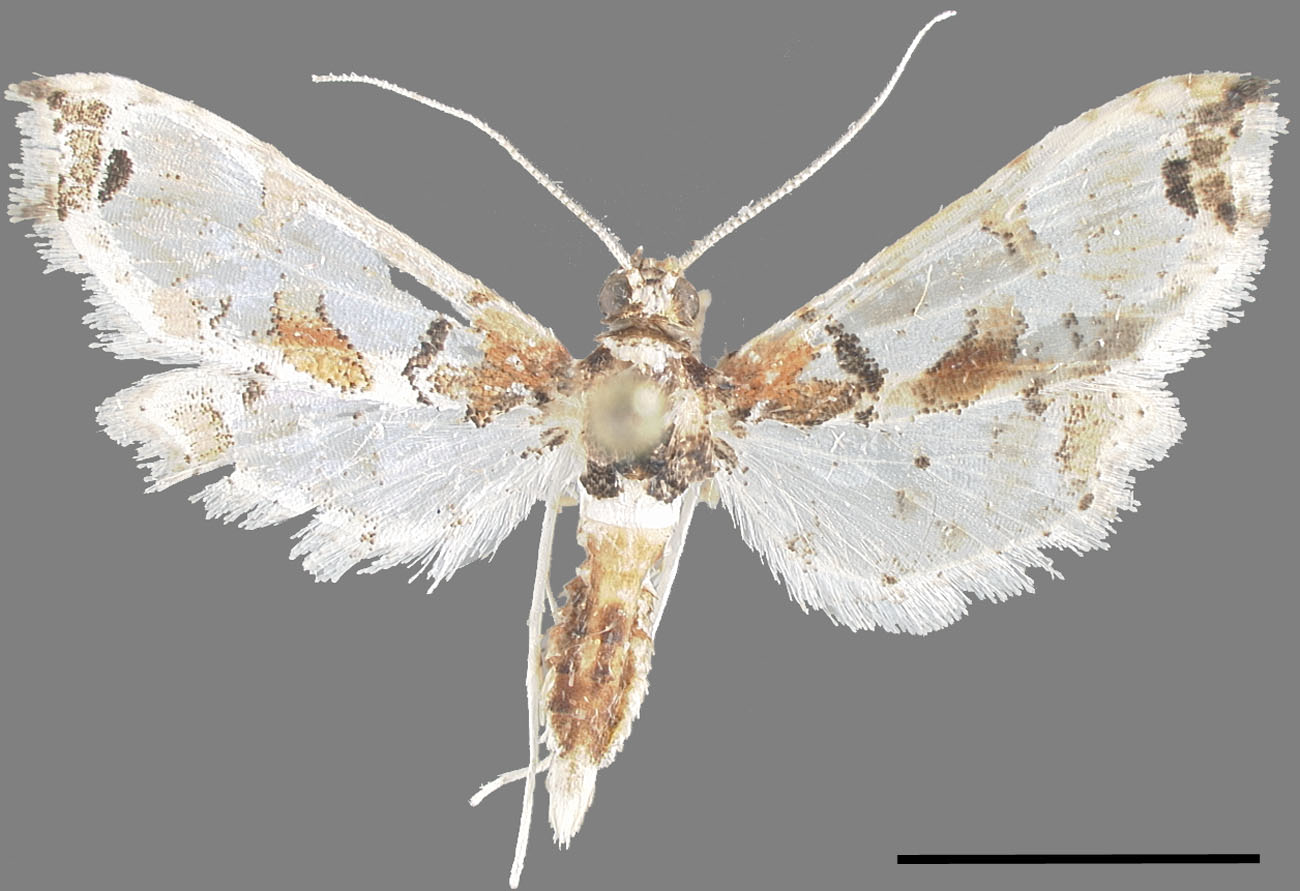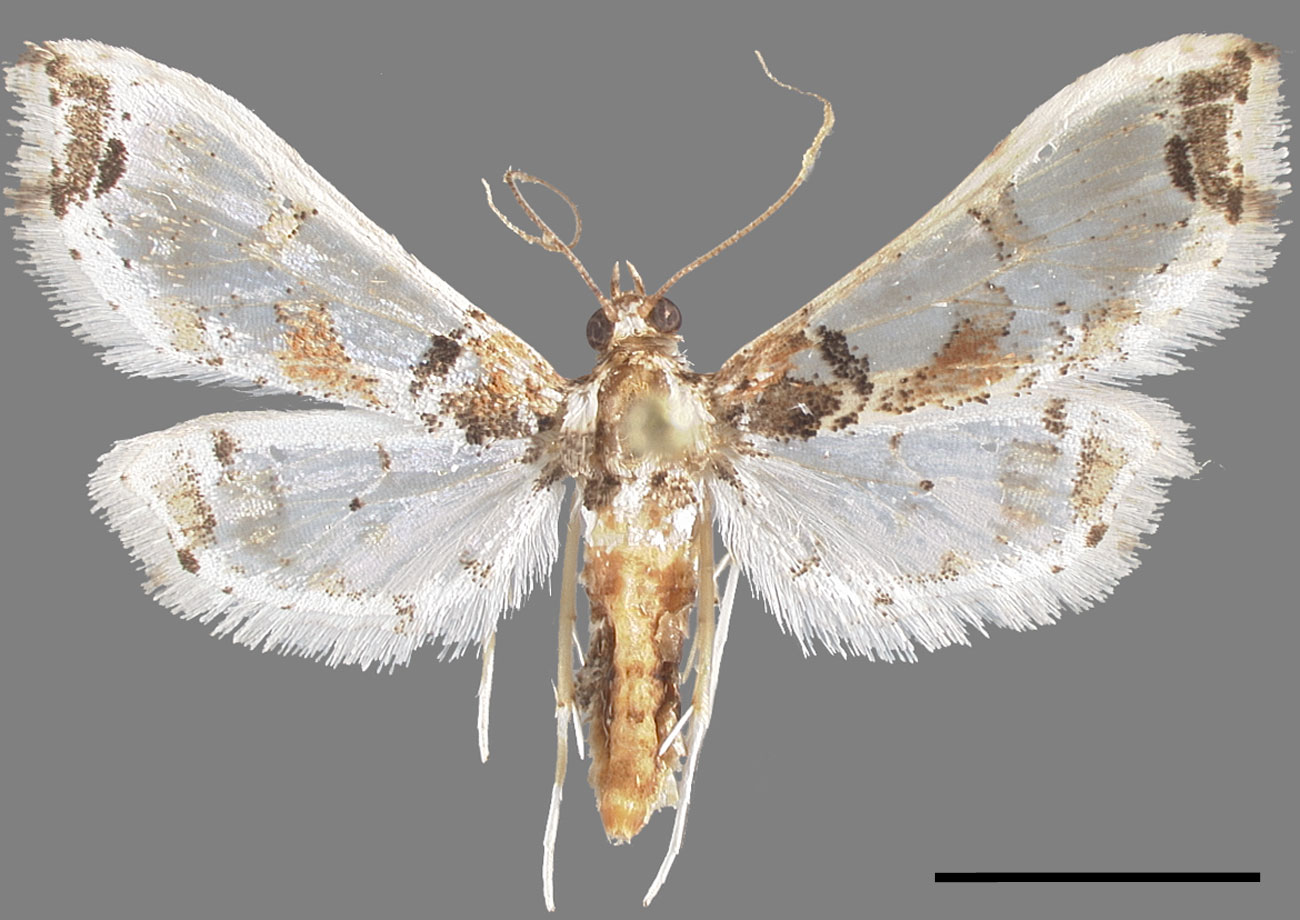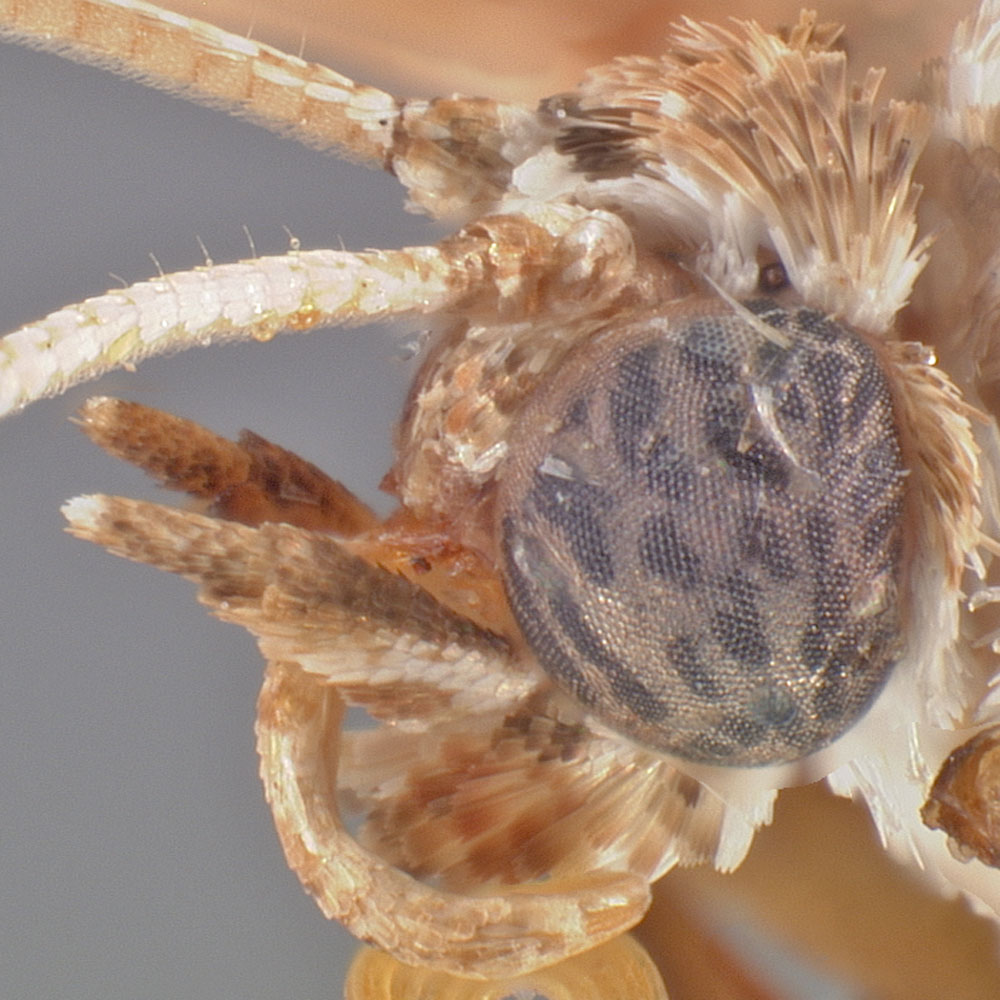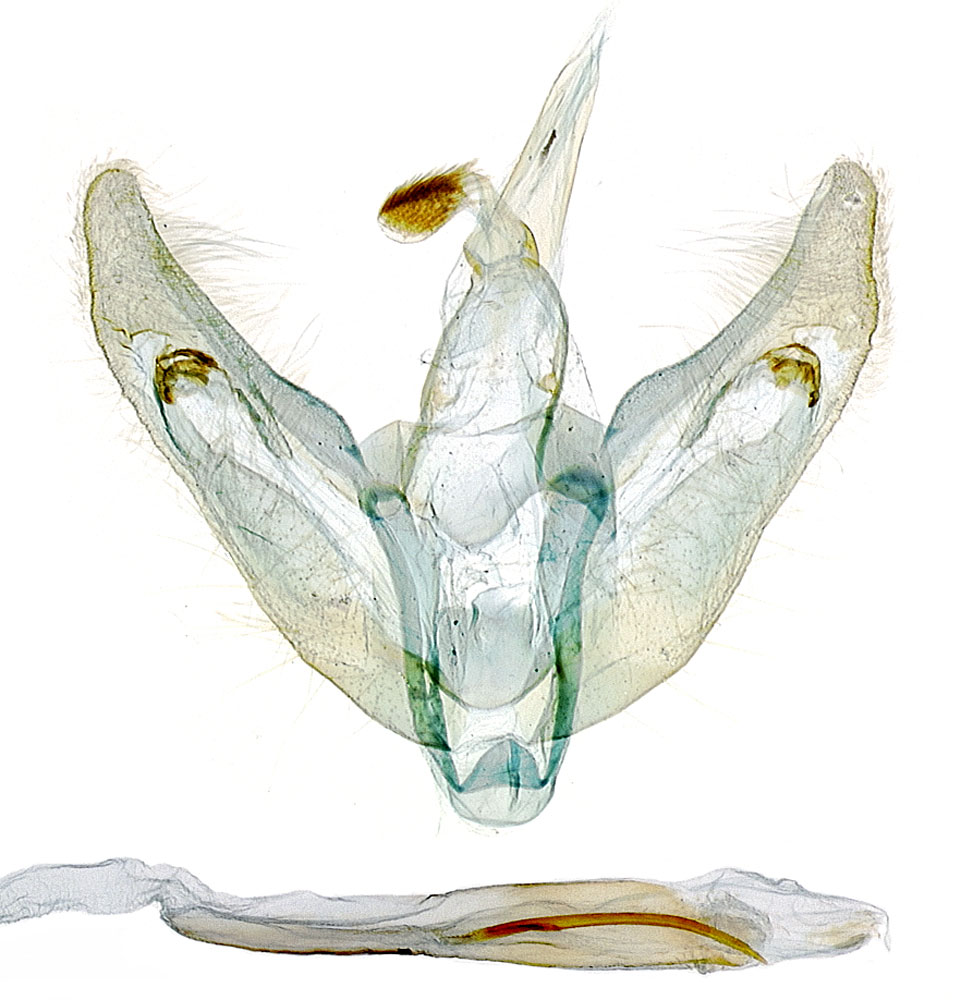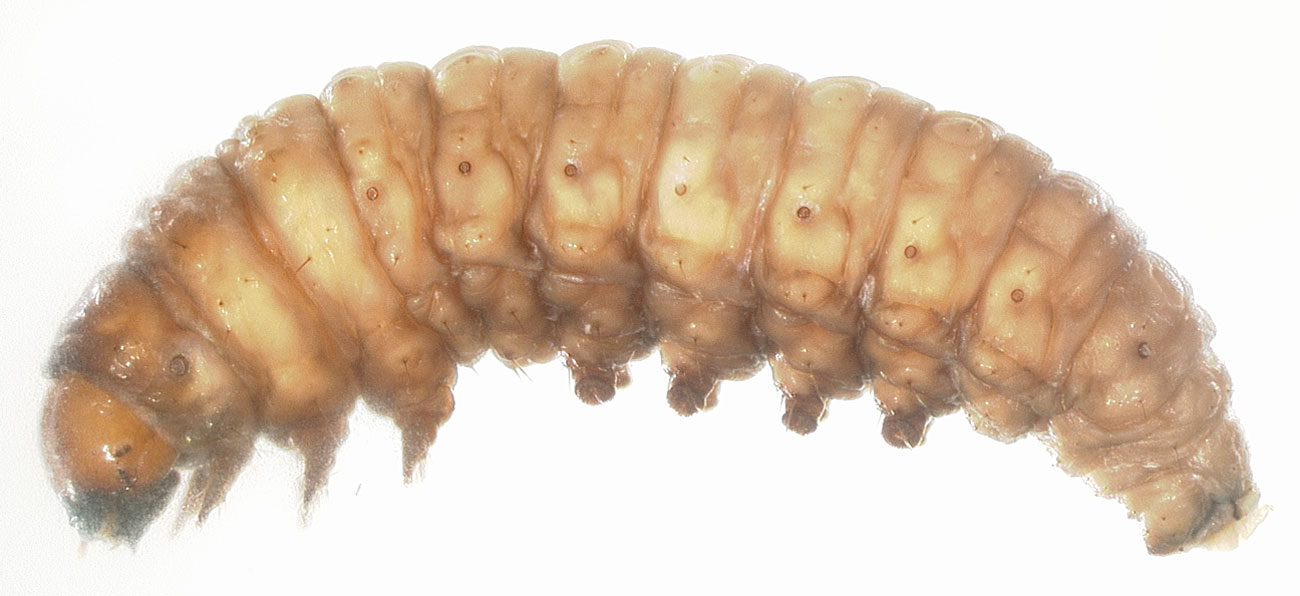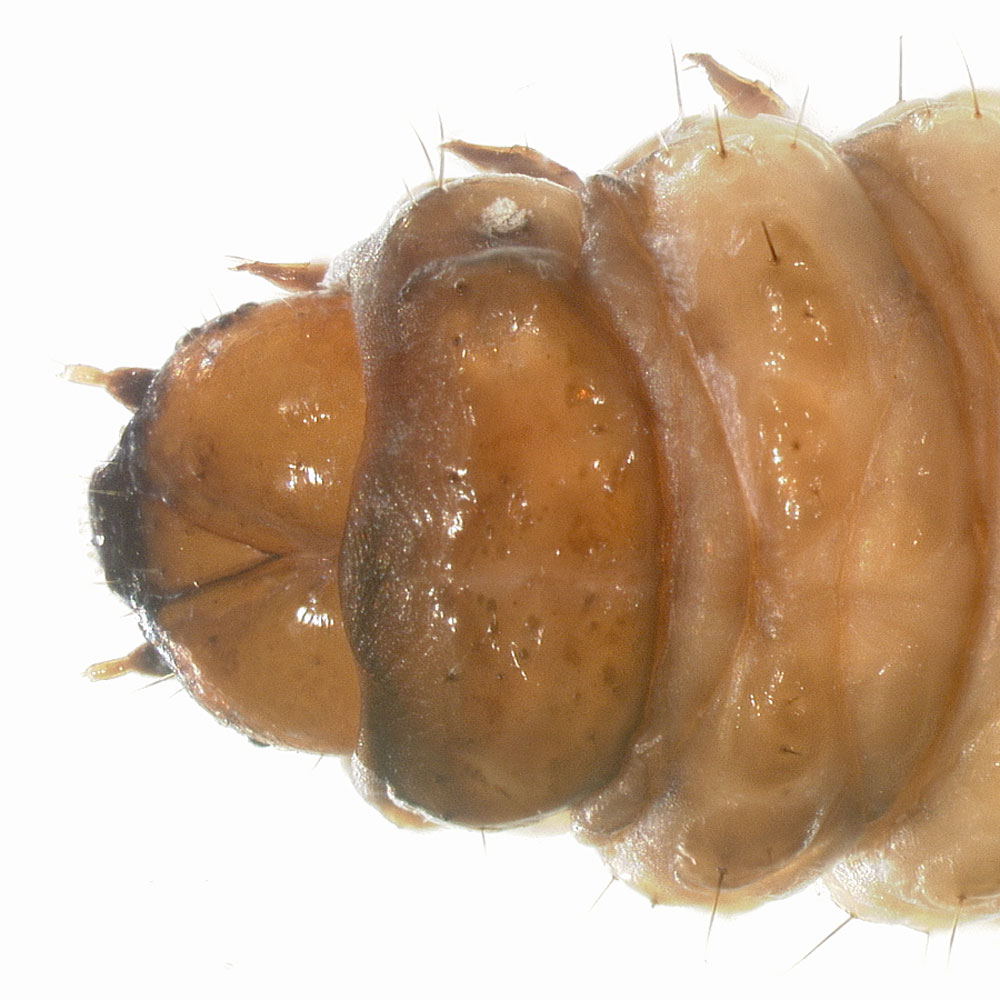Neoleucinodes prophetica
|
Neoleucinodes prophetica male habitus. Scale = 5 mm. |
|
Neoleucinodes prophetica female habitus. Terhune S. Dickel Collection. Scale = 5 mm. |
|
Neoleucinodes prophetica head of male. |
|
Neoleucinodes prophetica male genitalia. |
|
Neoleucinodes prophetica female genitalia. |
|
Neoleucinodes prophetica larva (dark from preservation). |
|
Neoleucinodes prophetica larva, head and first two thoracic segments. |
Name
Neoleucinodes prophetica (Dyar, 1914)
Common name: Potato tree borer
Original combination: Leucinodes elegantalis var. prophetica Dyar, 1914
Synonyms: Leucinodes minimalis Amsel, 1956
Alternative combinations: none.
Classification: Pyraloidea: Crambidae: Spilomelinae, Leucinodes group
Adult recognition
Forewing length: 8.5–10.5 mm, broad. The antennal sensilla are long, and the orange triangle of the forewing has its anterior and distal corners yellow. In the male genitalia, the fibulaFibula:
Any projection on the face of the valva (not including the saccular process, if any).
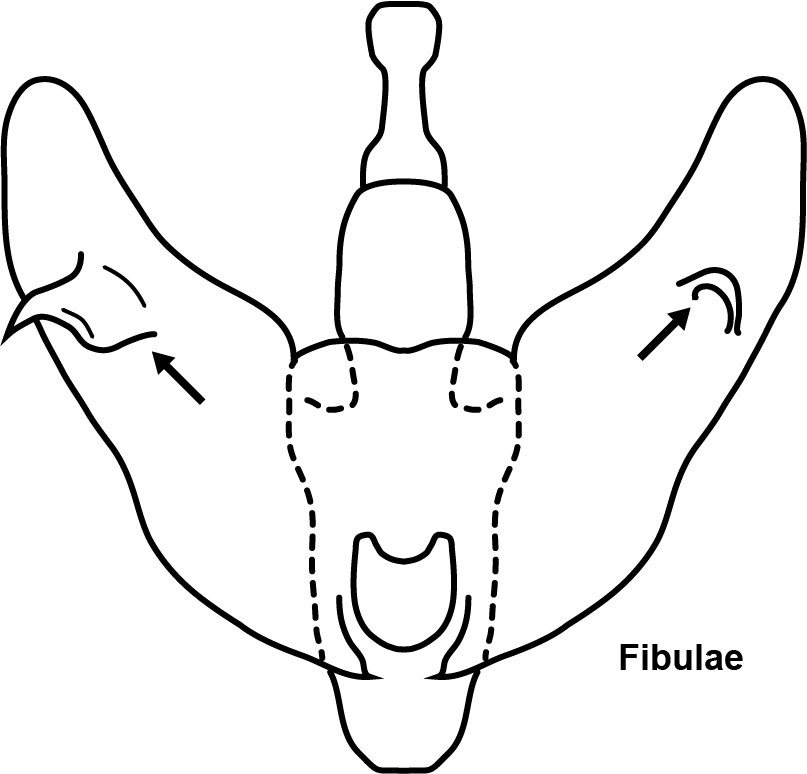 is located in the distal half of the valvaValva:
is located in the distal half of the valvaValva:
One of the pair of large lateral appendages of the male genitalia (pl. valvae).
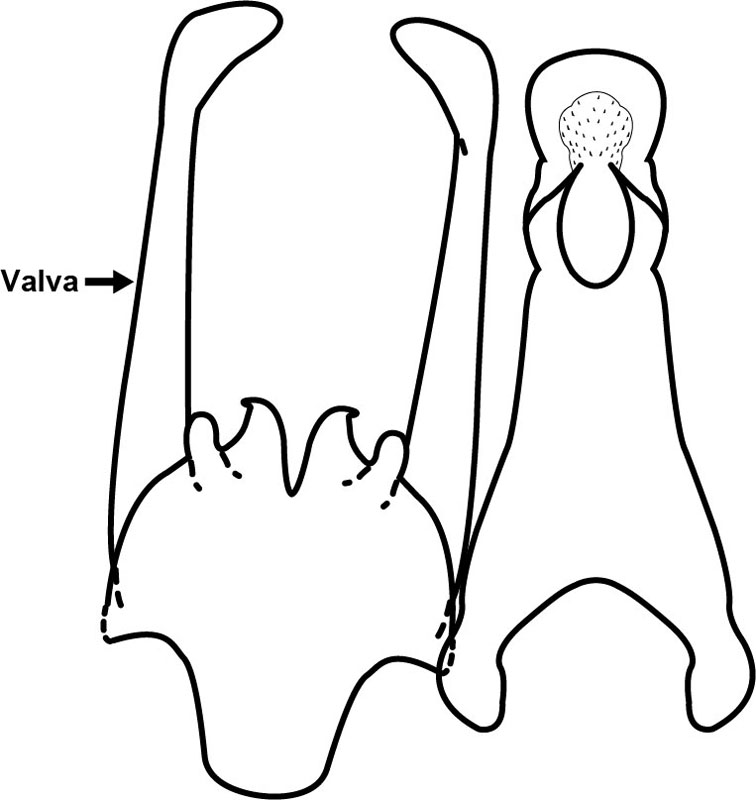 , and the cornutusCornutus:
, and the cornutusCornutus:
A usually spine-like sclerite visible within the phallus.
 is long and straight. In the female genitalia, the antrumAntrum:
is long and straight. In the female genitalia, the antrumAntrum:
Posterior section of the ductus bursae, posterior of the colliculum.
 is broadly swollen, the anterior (lower) lip of the ostium is sclerotized, and there is no appendix bursaeAppendix bursae:
is broadly swollen, the anterior (lower) lip of the ostium is sclerotized, and there is no appendix bursaeAppendix bursae:
An appendix or pouch arising from the corpus bursae.
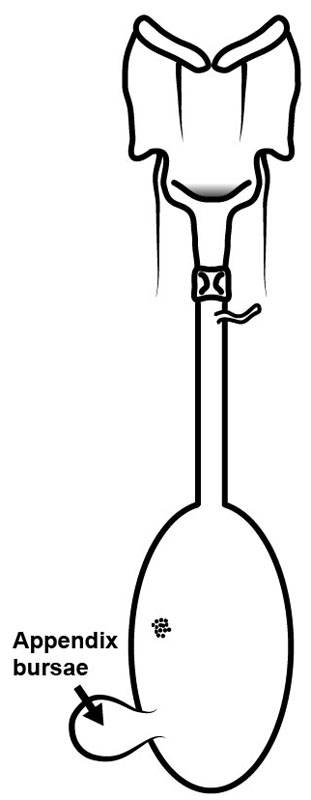 .
.
Immature stages
The larva resembles other fruit-boring relatives in structure, having one SV setaSeta:
A larval hair (pl. setae).
on A1 and the SD setaSeta:
A larval hair (pl. setae).
of A8 anterodorsal of the spiracleSpiracle:
Respiratory openings, mainly of interest for larval chaetotaxy. One pair on most segments.
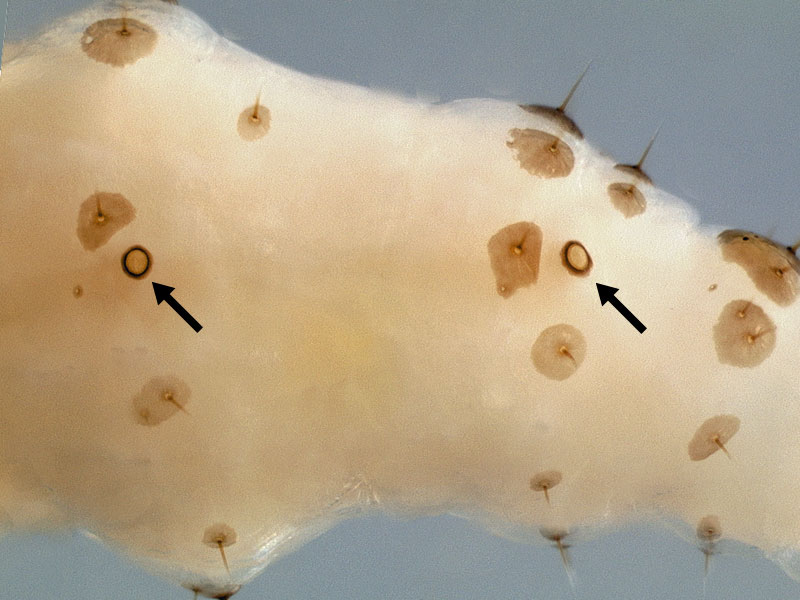 . The prothoracic shieldProthoracic shield:
. The prothoracic shieldProthoracic shield:
Also called the T1 shield. In the larva, the extensive sclerotized area of the dorsal half of the prothorax. It bears six setae on each side, and its color pattern is often diagnostic.
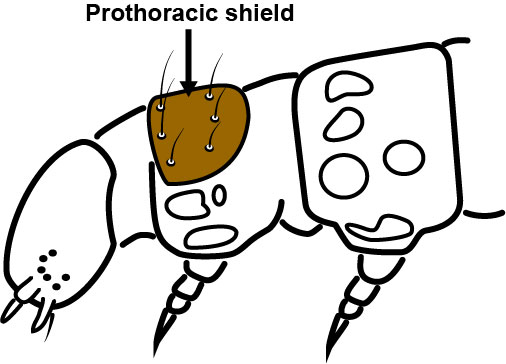 is pale brown without distinctive markings.
is pale brown without distinctive markings.
Similar species
In N. elegantalis, females have palps with a long terminal segment, and the orange triangle on the forewing posterior margin is more strongly marked. The male fibulaFibula:
Any projection on the face of the valva (not including the saccular process, if any).
 is in the basal half of the valvaValva:
is in the basal half of the valvaValva:
One of the pair of large lateral appendages of the male genitalia (pl. valvae).
 , and the ostium and antrumAntrum:
, and the ostium and antrumAntrum:
Posterior section of the ductus bursae, posterior of the colliculum.
 are not sclerotized or thickened.
are not sclerotized or thickened.
Behavior
Little is known about the behavior except that larvae bore in fruit.
Distribution
In the continental US, N. prophetica is established only in southern Florida. The species is widely distributed in the Caribbean and South America, including Brazil (RJ), Colombia, CostaCosta:
(1) The anterior margin of the wing.
(2) In the male genitalia, the dorsal margin of the valva.
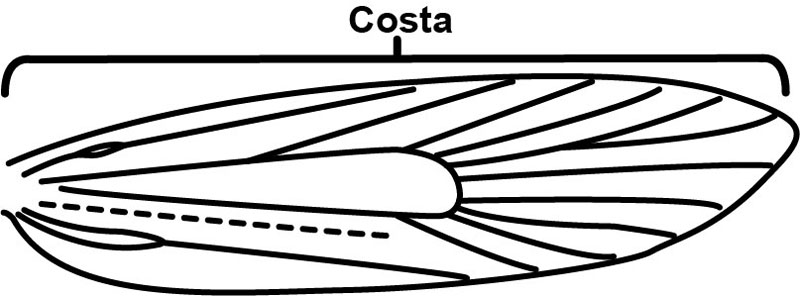 Rica, Cuba, Dominican Republic, Guatemala, Honduras, Jamaica, Panama, Peru, Puerto Rico, Trinidad and Tobago, Venezuela; possibly Mexico.
Rica, Cuba, Dominican Republic, Guatemala, Honduras, Jamaica, Panama, Peru, Puerto Rico, Trinidad and Tobago, Venezuela; possibly Mexico.
Hosts
Solanum umbellatum Mill.
S. erianthum D. Don. (potato tree)
Comments
Since the presence of N. prophetica in Florida was not known to Capps (1948) and Kimball (1965) lists only one specimen taken in 1959, it is possible that the species is a relatively recent arrival. Most specimens come from Key Largo, with a few from the southern mainland. It has been raised on S. erianthum in Key Largo, Florida, in February (FSCA). One specimen was caught in Louisiana over many years of continuous light-trap sampling (V.A. Brou, in litt.).
Literature
Capps 1948Capps 1948:
Capps HW. 1948. Status of the pyraustid moths of the genus Leucinodes in the New World, with descriptions of new genera and species. Proceedings of the United Sates National Museum 98: 69-83, pl. 5-10.
Díaz and Solis 2007Díaz and Solis 2007:
Diacute;az AE and Solis MA. 2007. A new species and species distribution records of Neoleucinodes (Lepidoptera: Crambidae: Spilomelinae) from Colombia feeding on Solanum sp. Proceedings of the Entomological Society of Washington 109: 897-908.
Kimball 1965Kimball 1965:
Kimball CP. 1965. The Lepidoptera of Florida: an annotated checklist. Arthropods of Florida and Neighboring Land Areas, Vol. 1. Division of Plant Industry, State of Florida Department of Agriculture, Gainesville, Florida. V+363 pp., 26 plates.

